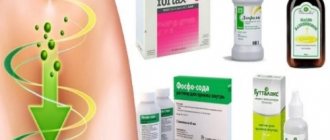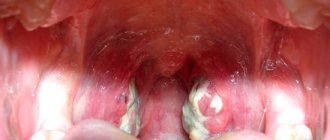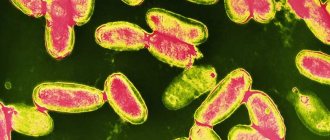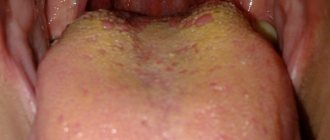Stool retention is a common symptom in children of all ages. The absence of bowel movements for 2-3 days is considered a physiological norm, but the addition of other symptoms to constipation: bloating, flatulence, nausea, weakness and general malaise, indicates the presence of serious disorders in the body and requires seeking medical help in order to obtain an appropriate laxative for children and eliminate the cause of constipation.
Causes of constipation in children
Before treating constipation in a child, it is necessary to understand the causes of the pathology, since in many cases the problem can be dealt with without the use of medications. The main reason for prolonged absence of stool in children of any age is nutritional errors. In children over 7 years of age and adolescents, this may be due to heavy consumption of fatty, floury, fried foods and simple carbohydrates: confectionery, sugar, chocolate.
Young children (1 to 6 years of age) may experience difficulty in bowel movements due to insufficient amounts of plant fiber and coarse fiber in their diet. This situation often occurs in families in which children have not been taught to eat vegetables in quantities necessary to meet age-related and physiological needs.
Your child may be constipated due to poor diet
Consumption of products containing large amounts of synthetic additives (dyes, flavors, flavor enhancers, stabilizers) also negatively affects intestinal motility and contributes to food retention in various parts of the small and large intestines. Irritating foods include all kinds of chips, crackers, carbonated soft drinks, sweets, ketchup, and mayonnaise. The volume fraction of these products in the children's diet should not exceed 7-10%.
Harmful drinks and foods with large amounts of dye have a bad effect on the child’s gastrointestinal tract
Other causes of stool retention in children may include:
- a state of chronic stress or emotional shock (moving, parental divorce, tense relationships with classmates, worries about external shortcomings);
- hypodynamia (a disorder of the musculoskeletal system, manifested by weakening muscle strength, poor circulation against the background of low physical activity);
- non-compliance with drinking regime;
- use of certain medications;
- prolonged suppression of the urge to defecate (for example, the child is afraid to ask to go to the toilet during quiet time or class);
- diseases of the pelvic organs and anorectal area;
- spinal injuries (especially lumbosacral).
Failure to drink properly leads to constipation
In infants, constipation can occur due to incorrectly selected formula, failure to comply with the timing and schedule for introducing complementary foods, and errors in the diet of the nursing mother. Physiological constipation up to 4-6 months is normal, as the digestive system continues to develop during the first six months of a baby's life.
It is important to select a high-quality formula suitable for the baby
Important! The norm for children is to have bowel movements 1-2 times a day. Isolated cases of absence of stool for 24-48 hours are not a pathology and do not require drug correction. If a child experiences constipation periodically, it is necessary to consult a doctor and rule out diseases of the digestive system. In breastfed infants, the frequency of stools can reach 8-10 times a day.
For weight loss
The problem of excess weight in women is often encountered in the modern world and, of course, they first try to solve it in third-party ways and only after much research they come to sports and a balanced diet. There is a widespread belief that you can lose a couple of extra pounds with the help of laxatives such as Duphalac. A large number of female audiences on thematic websites ask how to drink syrup to get rid of obesity.
The correct answer, of course, would be “no way,” because a laxative does not eliminate the problem of obesity, and if the drug is abused, it only makes the female body worse. Due to the regular use of Duphalac for the purpose of losing weight, dehydration develops, since a large amount of water intended for absorption is excreted along with feces. This entails a series of pathological conditions, the key of which is a total metabolic disorder.
As a consequence of metabolic changes, regular headaches and dizziness appear, the external condition of the skin and its appendages changes for the worse (nails become brittle and weak, and hair splits, loses its healthy shine and color). How quickly does the drug act in this way on a woman’s body?
https://youtu.be/zbg-jTR3y3Q
Baby laxatives: review and instructions
Choosing the right laxative for a child is quite difficult, since it is necessary to have a reliable clinical picture of health and be sure of the absence of possible contraindications. Before purchasing, you also need to make sure that the medicine is suitable for the child’s age. To make it easier for parents to navigate, below is a detailed overview of laxatives approved for use in childhood.
"Bisacodyl"
This is one of the most affordable and safe drugs to combat constipation in children, which can be used from the age of six. Bisacodyl has an irritating effect on receptors located on the surface of the epithelium of the large intestine. The drug stimulates contractions of the intestinal walls and the movement of the fecal bolus into the rectum. The medicine is available in the form of rectal suppositories and tablets containing 5 mg of active substance.
"Bisacodyl"
The standard therapeutic dosage for children over 6 years of age and adolescents is 5 mg. The drug should be taken in the evening with water. If the use of Bisacodyl is required to prepare for surgery or endoscopic examination of the intestine, the dosage can be increased to 2 tablets (10 mg).
Contraindications for the use of Bisacodyl and its analogues are:
- acute pathologies of the stomach and intestines (gastritis, gastroduodenitis, colitis, enteritis);
- gastrointestinal bleeding;
- intestinal polyposis;
- intestinal obstruction.
Laxatives are not prescribed for intestinal obstruction
Important! The drug promotes the excretion of water and minerals into the colon, so it cannot be used for a long time. Long-term use of Bisacodyl is especially dangerous for children suffering from heart disease, since potassium and magnesium ions are actively removed from the body along with water and feces.
"Dulcolax"
This is a more expensive analogue of Bisacodyl, which has an expanded list of indications and contraindications for use. The effect of the medicine begins 6-10 hours after application. If Dulcolax is taken in the evening, bowel movement will occur within 8-12 hours, that is, immediately after waking up.
"Dulcolax", suppositories
Pharmacological properties of the drug:
- binds to water in the alkaline environment of the gastrointestinal tract;
- increases mucus secretion in the colon;
- stimulates intestinal motility.
The dosage of the drug for children aged 6-12 years is the same as for Bisacodyl - 5 mg half an hour before meals or before bedtime. For adolescents over 12 years of age, the single dose can be increased to 2 tablets. If the medicine is used in the form of rectal suppositories, the following dosage regimen is used (for children over 10 years of age): 1 suppository 1-2 times a day. For children aged 6-10 years, half a suppository is inserted into the rectum. The duration of treatment should not exceed 1 week.
Drug in tablets
Note! The possibility of using Dulcolax in young children (from 1 to 6 years) is determined only by the attending physician. In this category of patients, the use of the drug is possible only in the form of rectal suppositories.
"Laxatin"
Laxatin tablets help to quickly and gently stimulate the motility of the large intestine and eliminate long-term constipation in 1-2 applications. The drug is taken once a day, and the single dosage depends on the age of the child: children over 12 years old can be given 2-3 tablets; if the child has not reached the age of 12 years, the single dosage is 1 tablet.
"Laxatin"
Laxatin should not be taken for any internal bleeding (as well as an increased risk of bleeding and hemorrhage) and acute diseases of the stomach and intestines. Also contraindications to the use of this drug in children are:
- inflammation of the bladder (cystitis);
- acute pancreatitis;
- spasms of intestinal smooth muscle muscles (spastic constipation);
- acute inflammation of hemorrhoidal veins.
In girls during puberty, the use of Laxatin tablets is contraindicated during menstrual bleeding.
Attention! The drug has quite severe side effects, so it cannot be used for a long time. The most dangerous consequences of non-compliance with instructions are myasthenia gravis, arterial hypertension, and seizures. You can take the tablets only with juice or water: simultaneous use with milk-containing drinks is prohibited.
"Forlax" for children
Forlax is one of the most effective and popular drugs for quickly eliminating constipation in children. It can be used from six months of age. For children aged 6 months to 8 years, the drug is available in a special children's form (powder for preparing a solution with orange flavor). Children over 8 years old can be given regular Forlax.
"Forlax"
The dosage depends on age and can range from 1 to 2 packets per day (children from 6 to 12 months are given half a packet per day). It is better to take the product once in the morning. For chronic constipation, treatment with Forlax can be prescribed for a long time: up to 2-3 months. After normalization of stool, correction of the food and physical regime is indicated.
Forlax sachets
Important! Any abdominal pain of unknown localization is a contraindication for the use of Forlax and a reason to consult a doctor.
"Transipeg"
This is a laxative drug in powder form for preparing a solution based on macrogol. It can be used to combat constipation in children over 1 year of age. The finished solution has the taste of lemon or apple, which children like, so there are usually no difficulties with treatment. The advantage of "Transipeg" is that it is not digested in the stomach and intestines and is not absorbed by the mucous membranes, but is excreted from the body unchanged. The drug retains water in the large intestine, which mixes with stool and softens it. "Transipeg" does not irritate the mucous membranes, and the effect of use appears after 1-2 days.
"Transipeg"
The dosage for children is usually:
- from 1 year to 6 years – from 2.95 g to 5.9 g per day (up to 2 sachets);
- from 6 to 12 years – from 2.95 g to 8.85 g (up to 3 sachets per day).
Note! If during treatment a child develops a skin rash, it is necessary to stop using the drug and give him an age-appropriate antihistamine and a sorbent.
FAQ
Can glycerin suppositories be given to a child?
Yes, you can. Glycerin suppositories are used from the neonatal period no more than once a day when a child has constipation for more than two days.
How long does it take for glycerin suppositories to start working?
The action of the suppository begins after it is dissolved and partially absorbed by the mucous membrane - after 10-15 minutes.
How long does it work on children?
The action of a glycerin suppository is enough for one act of defecation after prolonged constipation, since it allows you to soften the stool at the exit from the rectum.
Are glycerin suppositories addictive?
Yes, glycerin suppositories with long-term uncontrolled use are addictive, which is characterized by intestinal atony without the introduction of a suppository. Gradually, one suppository becomes insufficient, and patients increase the frequency and dose of administration.
How often can you use glycerin suppositories?
Glycerin suppositories can be placed no more than once a day according to indications. Indications for placing a suppository are constipation that lasts more than two days.
We recommend reading:
Intestinal dyskinesia: types, causes, symptoms and treatment methods
Products with natural composition
More than 80% of drugs in this group are herbal products. Despite the fact that some of them belong to the category of biologically active food additives, they cope well with constipation in children and help to gently normalize stool without irritating the mucous membranes of the gastrointestinal tract.
"Help"
This is a herbal syrup for children over 3 years old, which contains an infusion of herbal raw materials and lactulose. The drug is also enriched with B vitamins and vitamin C, which have a general strengthening effect and regulate digestive processes. The effect of the syrup is determined by the properties of its constituent components.
Line of syrups "Pomogusha"
Composition of Pomogusha syrup and its effect
| Component | How does it work? |
| Fennel seeds | They reduce gas formation, eliminate flatulence, and have a relaxing effect on the smooth muscle of the intestine. |
| Anise | Stimulates the formation of mucus in the intestines, normalizes intestinal motility. |
| Cherry | It has a mild laxative effect and thins dry stool. |
| Apple | Contains coarse fiber, cleanses the intestines, removes toxic substances from it, products of rotting. |
| Strawberries | Normalizes digestive processes, improves food digestion. |
| Caraway | Neutralizes decay processes in the colon. |
| Lactulose | Promotes the growth of beneficial bacteria necessary for proper and comfortable digestion. |
Pomogusha syrup has a cumulative effect, so it must be taken within 30 days. Dosage regimen: 1 teaspoon 2-3 times a day (the drug can be diluted in water).
"Fibralax"
This is a drug from the category of dietary supplements that has recently appeared on the market, but has already proven its effectiveness in the treatment of constipation in adults and children. As an active ingredient, the product contains the shell of plantain seeds. This is a source of coarse fiber, which not only cleanses the intestines of “garbage” (toxins, allergens), but also binds excess cholesterol, helping to reduce the fatty load on the liver. This is especially true for children who consume large quantities of fatty and fried foods.
"Fibralax" powder for suspension
"Fibralax" is available in powder form for preparing a solution. It is not addictive and has sorbent properties, so if necessary it can be used for a long period of time. Preparing the solution (suspension) is simple: pour the contents of the package into a mug, add a glass of cold water and stir thoroughly. After taking the suspension, you should drink another glass of cold water. It is recommended to take the product half an hour before meals or 2 hours after meals.
"Fitolax"
This is one of the most popular drugs that are used for mild correction of intestinal motor function in adolescents over 14 years of age. The product has a natural composition (extracts of plantain, dill and senna and apricot powder) and is available in convenient dosage forms that allow you to take into account the individual preferences of adolescents: chewable tablets, tea, fruit bar and concentrate for preparing a strawberry-flavored drink.
"Fitolax"
In some pharmacies you can even find Fitolax chocolate for sale, which is perfect for teenagers who refuse to take laxative medications in the form of tablets and syrups. You need to take 1-2 tablets in the evening (chew, do not wash down with water).
Fruit bar
Properties of the drug:
- stimulates contractions of the intestinal walls;
- binds and removes toxic substances, allergens, heavy metal salts from the intestines;
- reduces bloating and gas formation;
- increases mucus secretion in the large intestine.
All preparations under the trade name “Fitolax” do not contain flavorings, dyes, sugar and gluten.
Natural laxative
Video: What medications are more effective for constipation in a child?
pharmachologic effect
Duphalac syrup is classified in the medical literature as a laxative drug. The drug has a hyperosmotic effect, stimulates the physiological act of intestinal motility, improves the absorption of calcium salts and phosphates. Also, the effects of medicinal syrup extend to nitrogen metabolism - ammonia migrates from the blood to the intestines, where the formation of toxic products of nitrogen metabolism is significantly reduced and their absorption into the inferior vena cava system is inhibited.
The mechanism of the therapeutic effects of a pharmaceutical drug lies in the cooperation of the biologically active active ingredient with the natural microflora of the large intestine. The properties of lactulose make it possible to increase the number of lactobacilli, which, when broken down, form low molecular weight acids that reduce acidity in the lumen of the digestive tube.
What to give to a newborn?
Constipation in infants is the most common problem up to the age of 4-8 months, while the child’s digestive system is forming and the intestines are populated with various microorganisms. A laxative for a child under 1 year of age should have a natural composition, and the active ingredients should not enter the systemic bloodstream, as this can cause side effects and an allergic reaction.
"Mikrolaks"
Microclysters "Microlax" are one of the most effective, convenient and safe drugs for relieving constipation in newborns and infants under 1 year of age. To introduce the drug into the rectum, you need to carefully break the seal of the tube, insert the tip into the child’s anus (half the length!) and squeeze out the contents. After this, without unclenching your fingers, remove the tip of the microenema and turn the child onto his stomach to prevent the solution from leaking out.
The effect of using Microlax usually occurs 15-30 minutes after application. The product has no contraindications, but you should not use it too often, as this can lead to lazy bowel syndrome.
The principle of operation of the microenema "MICROLAX® for children from 0 years old"
"Duphalac" and its analogues
Duphalac is a drug in the form of a lactulose-based syrup. Lactulose is considered the mildest and safest children's laxative, and medications based on it can be used from birth. The dosage is calculated individually and usually ranges from 2.5 ml to 5 ml.
"Duphalac"
Analogues of the drug: “Portalak”, “Goodlak”, “Lactulose”, “Normaze”.
"Normaze"
What medications will help solve the problem?
When faced with the problem of constipation for the first time, parents should consult a doctor who will tell you which laxatives for children can give good results. They may also be given recommendations on how to solve the problem without medication.
For example, in some cases it is enough to adjust the baby’s eating and drinking regime. Massage and heat applied to the baby's belly can also give good results.
If these recommendations do not lead to positive changes, then you should resort to medications from the following groups:
- Volumetric. Their feature is the binding of fluid that is located in the intestinal lumen, due to which its volume increases. This leads to the process of defecation.
- Annoying. Due to a special chemical composition, irritation of the receptors in the wall of the digestive organ occurs.
- Osmotic. The process of defecation occurs due to the fact that salts are no longer absorbed by the body, and feces increase in volume.
Children's remedies for constipation come in different forms. Therefore, the problem that has arisen can be solved at any age. For example, the most relevant forms of laxatives are:
- Candles.
- Syrups.
- Drops.
- Microclysters.
- Pills.
The selected product must be effective and safe. In the first case, only a consultation with a doctor will allow you to decide which drug will give the best result. As for safety, when purchasing, you should study the instructions for use, all kinds of side effects and contraindications.
When choosing a laxative for a child, you should pay attention to the fact that it:
- It had a gentle effect on the body.
- Its active substances were aimed only at solving the problem, and not at the entire body.
- It did not affect the body's absorption of salt.
- It was manufactured by a trusted manufacturer who has earned a positive reputation.
- Appropriate for the child's age.
https://youtu.be/rySHbYPjkz0
Laxatives for children: table
The table below shows the most popular laxatives for children, as well as the age at which they can be used and the recommended dosage regimen.
Scheme for the use of laxatives in children
| Name | From what age can it be used? | Mode of application | approximate cost |
| "Bisacodyl" | From 6 years old | 5 mg once in the evening. | 12-40 rubles. |
| "Dulcolax" | From 6 years old | 1-2 tablets 1 time per day. | 188-230 rubles. |
| "Laxatin" | From 6 years old | 1-3 tablets 1 time per day. | 80-130 rubles. |
| "Forlax" for children | From 6 months | 1-2 sachets per day. | 250-280 rubles. |
| "Transipeg" | From 1 year | 1-3 sachets per day. | 180-260 rubles. |
| "Help" | From 3 years | 1 teaspoon 2-3 times a day. | 110-140 rubles. |
| "Fibralax" | From 3 years | 1 package per day. | 180 rubles. |
| "Fitolax" | From 14 years old | 1-2 tablets per day. | 160-250 rubles. |
| "Mikrolaks" | From birth | 1 microenema per day. | 290-440 rubles. |
| "Duphalac" | From birth | 2.5-5 ml per day. | 250-310 rubles. |
Video - Recommendations of Dr. Komarovsky
Soap suppository: how to make and use
This method is called “grandmother’s”: pediatricians do not recommend resorting to it. Soap suppositories help relieve constipation, but they cause severe irritation, which can even cause inflammation .
To make a candle from soap solution, you do not need any special molds. It is enough to cut a piece of ordinary baby soap measuring 0.4 cm and insert it into the intestine to a depth of no more than 1 centimeter. The procedure cannot be repeated.
When using soap suppositories, you should be prepared for the effect of treatment to develop within 3-5 minutes. But no one can guarantee that the alkali contained in the product will not cause severe burns to the mucous membrane.
We invite you to learn a lot about rectal suppositories for children. In separate articles we will tell you about the following drugs:
Traditional methods
Below are two of the most effective, safest and fastest ways to combat constipation in children, which can be used as needed.
Kefir drink
Pour boiling water over a few pieces of dried apricots or prunes and leave for 1-2 hours so that the fruits swell. Chop the fruit thoroughly and mix it with a glass of kefir. Instead of kefir, you can use acidophylline, bifidoc or yogurt. You should drink this drink on an empty stomach 0.5-1 hour before meals.
Kefir cocktail
Mint infusion with chamomile
This drink itself does not have a laxative effect, but it helps to normalize digestion and soften dry stool, as well as eliminate abdominal discomfort caused by rotting or fermentation of food waste. To prepare the infusion, you need:
- mix mint leaves with chamomile flowers;
- Pour 1 teaspoon of the mixture into a glass of boiling water and cover with a lid;
- leave for 40 minutes;
- strain.
Tea with chamomile and mint
The infusion should be drunk 2 times a day, 1 glass. Treatment can be continued for 3-7 days, especially if the child suffers from colitis and other inflammatory bowel diseases. Read air from the stomach on our website.
General contraindications
Each constipation medicine for children has its own limitations for use. But taking any laxatives is prohibited in the following cases:
- intestinal obstruction;
- attack of appendicitis;
- strangulated hernia;
- dehydration of the body;
- colitis of any nature;
- aganglionosis;
- spastic constipation.
It is dangerous to give a laxative if there is a foreign object in the intestines, the presence of congenital structural anomalies, or inflammation of the gastrointestinal tract.
General recommendations during treatment
Recommendations for completing the course of treatment:
Before using any of the described laxative suppositories, it is important to consult with a pediatrician, since not all contraindications can be determined by parents on their own. It is important to choose the safest dose of the active substance so as not to provoke side effects.
If treatment with suppositories does not give the desired result during the first two days, you should immediately seek medical help.
Source: malutka.pro











